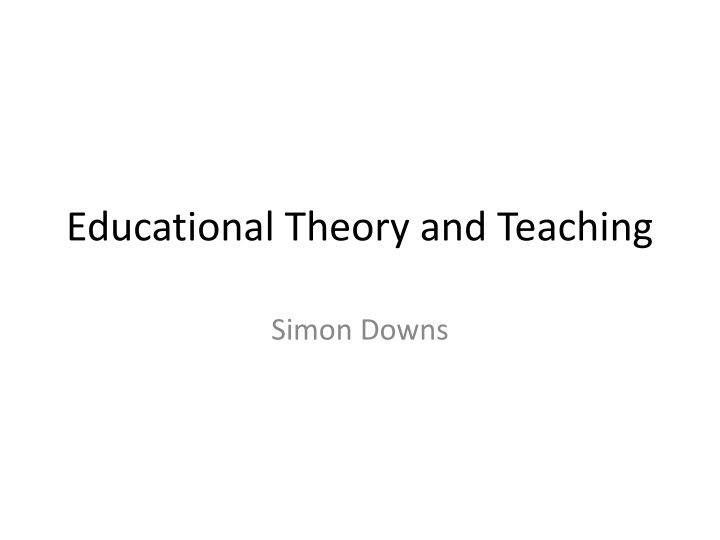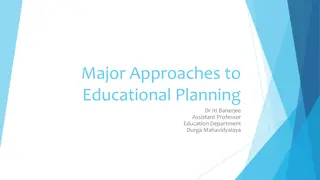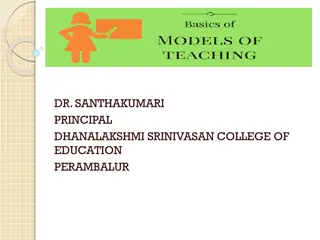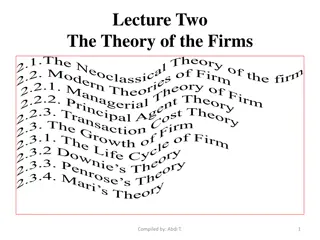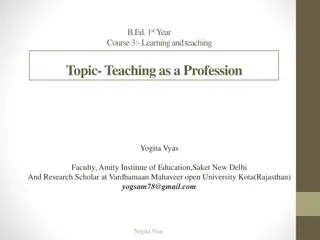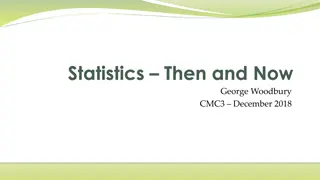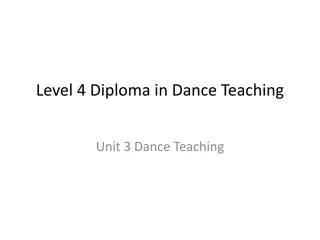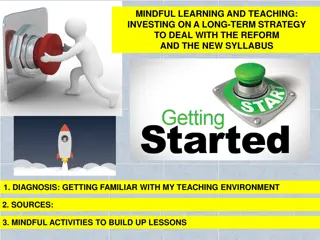Insights into Educational Theory and Teaching Approaches
Explore various educational theories, teaching styles, memory types, intervention categories, and feedback strategies through visual aids. Delve into concepts like Maslow's Hierarchy of Needs, Miller's Pyramid, and the Johari Window for a deeper understanding of effective teaching practices and self-reflection in education.
Download Presentation

Please find below an Image/Link to download the presentation.
The content on the website is provided AS IS for your information and personal use only. It may not be sold, licensed, or shared on other websites without obtaining consent from the author.If you encounter any issues during the download, it is possible that the publisher has removed the file from their server.
You are allowed to download the files provided on this website for personal or commercial use, subject to the condition that they are used lawfully. All files are the property of their respective owners.
The content on the website is provided AS IS for your information and personal use only. It may not be sold, licensed, or shared on other websites without obtaining consent from the author.
E N D
Presentation Transcript
Educational Theory and Teaching Simon Downs
MASLOWS HIERARCHY of NEEDS File:Maslow's Hierarchy of Needs.svg
Millers pyramid WPBA Action Does CSA Performance Shows How CSA Competence Knows How Knowledge AKT Knows
Types of Memory (VAK) Visual Visual learners find it easier to take in new information through pictures, diagrams, charts, films, etc. Auditory Verbal learners find it easier to take in new information through the spoken word Kinaesthetic Kinaesthetic learners find it easier to take in new information through copying demonstrations and getting physically involved
Teaching Styles Authoritarian Socratic Heuristic Counselling
SIX CATEGORIES OF INTERVENTION Prescriptive - Informative - Confronting - Give advice or instruction directive Explaining and giving information Giving feedback to the trainee on their behaviour or attitude, in order to help them see what is happening Helping the trainee release their emotions Encouraging the trainee to explore their own feelings and reason for behaviour Encouraging the trainee s self worth by giving approval Cathartic - Catalytic - Supportive -
The old feedback sandwich Praise Criticism Praise
Challenge v Support Optimal Growth
Steinert 2008:BMJ 336, 150-153 Where does the problem lie? Unsupportive Overly critical Unreasonable expectations Disinterested Non challenging Failure to meet learner s needs Teacher Work (e.g. workload, unsupportive staff) Social (e.g. marital, financial) Personal (e.g. substance abuse, illness) Training (e.g. unsupportive VTS, lack of guidance) Knowledge Skills Attitudes Learner Environment
